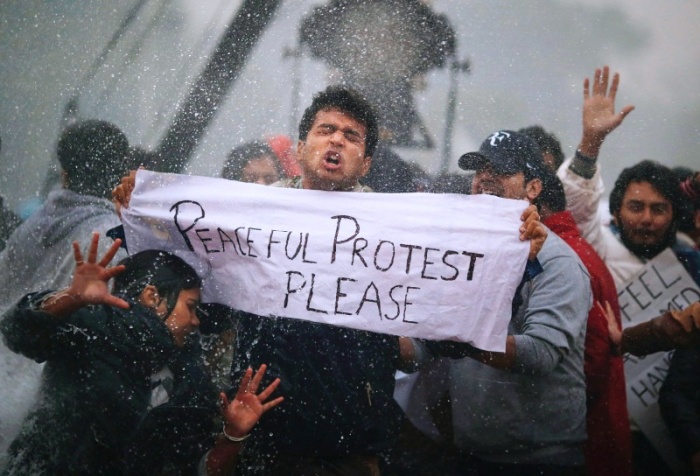Women Empowerment: A Long Way to Go
Women Empowerment and Gender Equality is still a distant dream for women in many parts of the world.

Using dominance has been a common strategy for exerting one's influence throughout human history.
When people disagree with the system or when a large part of the population feels it is due something that is being withheld, people will come together and protest, sometimes forming massive demonstrations when the same sentiment resonates amongst large parts of the population.
Increasing pressure on government or other institutions is a coercive tactic that is meant to increase costs in the hopes of changing the “other’s” course of action. But when do mass demonstrations go too far? Can we protest without physically harming people?
When communities are marginalized or oppressed because of their identity or for other reasons, they have the right to express their discontent against the situation. Injustices enforced by institutions of power are a form of structural violence that can trigger a violent community reaction that puts human life in danger.
When the recent farmers’ protest in India turned violent, many protesters and law enforcement personnel who were there to control the protestors, were hurt. The violence also terrified nearby Delhi residents who remained in their homes.
The same thing happened last year when people were protesting against the Citizen’s Amendment Act (CAA). Impacted communities sat together on roads for days. That protest also turned violent, causing injuries to the demonstrators and triggering clashes between the police and the protestors. The police used deadly force against the protestors and both protestors and police were killed and injured during the confrontation. Despite the protest, the CAA law remains.
Violence inevitably leads to counter violence, as was clearly seen during the CAA protests in 2020. When the people who were adversely affected by this new law faced those who were in favor of the CAA, fighting ensued. People were attacked and hundreds were killed, their houses burned and their vehicles vandalized. Police used water cannons, sticks and guns to control the violence coming from both sides.
When demonstrations escalate, there is potential for violence from three sides: protestors, counter-protestors and law enforcement.
In 2016, the Jat reservation uprising also turned into violent protests when the Jat community of North India protested to get their caste included in the list of “Other Backward Castes” (OBC). The demonstrations started peacefully but became violent when protectors began blocking railway tracks and roads. The Non-Jat community organized a counter-protest and a clash ensued, killing many people and causing a lot of property damage. No resolution has thus far been found but they did get a nominal number of jobs allocated in Haryana state Government.
In 2008, the Gujjar caste organized a number of protests demanding special status under India’s reservation system. The demonstration became violent when police fired on angry protestors. Many were killed and hundreds injured in the process. They held many peaceful demonstrations after that but in 2020 escalated their actions again causing property damage. Recommendations made to the Central Government are still awaiting a final decision.
These are few examples of protests that turned violent in India. Many such vicious protests were also seen in the last decade worldwide. Every community, group of people and even individuals have a right to protest if something goes against their interests. They can increase pressure to demand something from the authorities or demonstrate against an unacceptable action. But what happens when tensions rise? Is it then possible to demonstrate peacefully when met with further repression? That is the question of the times. Does oppression give us permission to get our needs met by any means necessary, even using violence?
There is a need to restrain ourselves from violent agitations. From the examples cited above, the loss of lives and property damage are too heavy of a cost to bear and ultimately don't seem to be succesful. Let us also not forget that it is our youth that too often get involved in the violence.
How are we preparing the next generation to get their needs fulfilled?
One example of non-violent protest took place in 2012 after the horrific gang rape of a young girl in India. The country came out en masse to demand justice for the girl and her family. The police used force and water cannons to control the demonstration, but protestors never lost their patience, and in the end, justice was given.
Satyagraha was a method adopted by Mahatma Gandhi for protests and demonstrations. Satyagraha, or holding firmly to the truth is a form of non-violent resistance or civil disobedience. Gandhi used Satyagraha in the Indian Independence Movement and also in South Africa while fighting for Indian Rights. Satyagraha theory influenced Martin Luther King Jr.'s and James Bevel's campaigns during the Civil Rights Movement in the United States, as well as Nelson Mandela's struggle against apartheid in South Africa and many other social justice and similar movements that achieved tremendous successes over time for the rights of those they were defending.
Let’s restrain ourselves from violence in the name of obtaining our rights. Let us advocate peacefully, protest non-violently, and keep holding on to truth because in the end, Satyagraha has proven to be more powerful than violence.
----
Photo credit: AP Photo/Saurabh Das. Indian police officers use a water cannon to disperse demonstrator near the India Gate as they protest against the gang rape and brutal beating of a 23-year-old student on a bus in New Delhi, India, on December 23, 2012. The attack sparked days of protests, across the country, against current rape laws and the government's mishandling of rape cases all over India.
